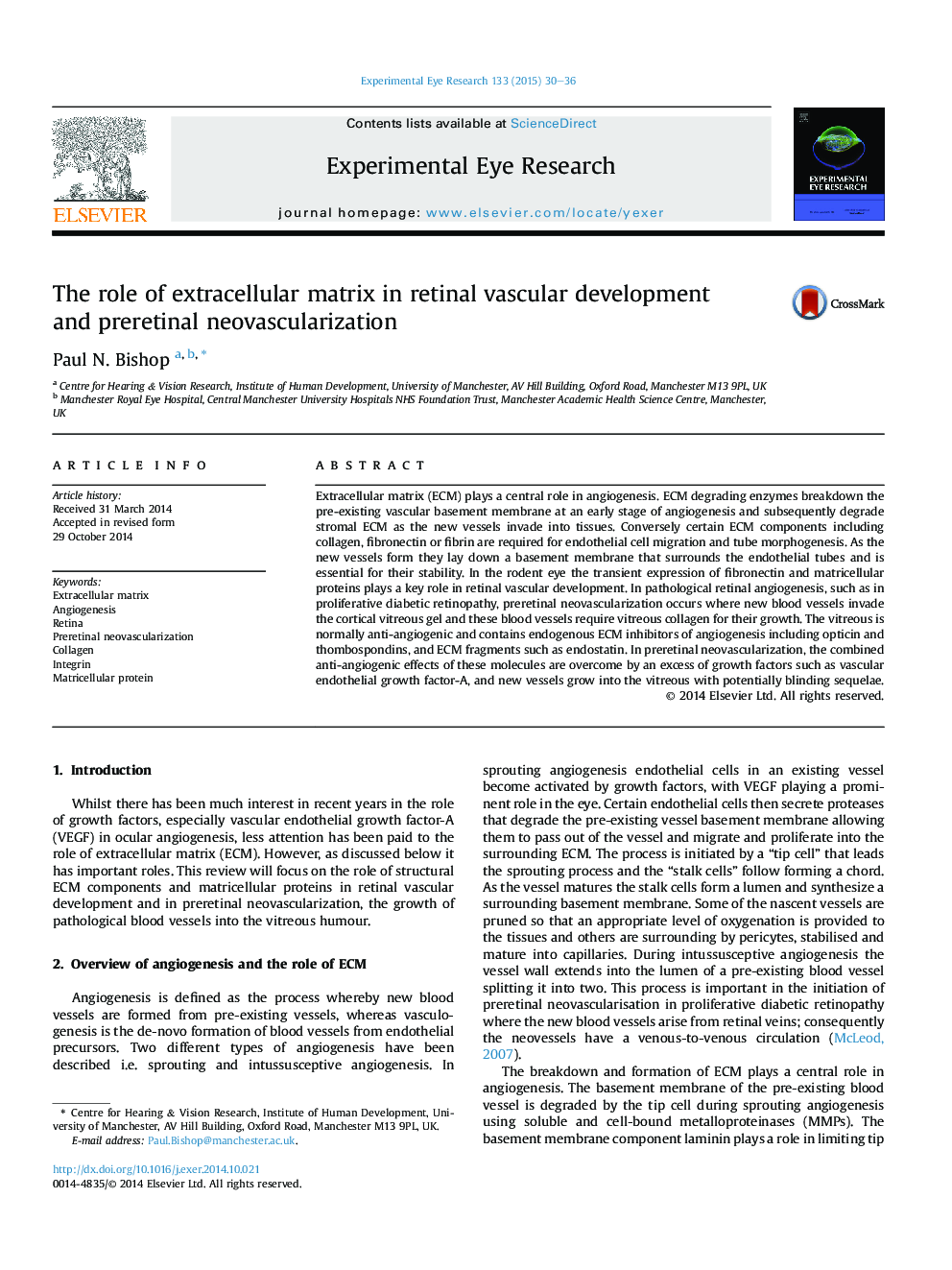| کد مقاله | کد نشریه | سال انتشار | مقاله انگلیسی | نسخه تمام متن |
|---|---|---|---|---|
| 6196663 | 1602589 | 2015 | 7 صفحه PDF | دانلود رایگان |

- Extracellular matrix (ECM) breakdown and formation are essential processes in angiogenesis.
- Signalling from specific ECM components via integrins is required for angiogenesis.
- ECM components involved in retinal vascular devlopment: fibronectin, thrombospondin-1, laminin, type XVIII collagen, CCN1.
- Vitreous collagen provides an essential substrate in preretinal neovascularization.
- ECM components that act as angiogenic inhibitors in vitreous include opticin, thrombospondins and endostatin.
Extracellular matrix (ECM) plays a central role in angiogenesis. ECM degrading enzymes breakdown the pre-existing vascular basement membrane at an early stage of angiogenesis and subsequently degrade stromal ECM as the new vessels invade into tissues. Conversely certain ECM components including collagen, fibronectin or fibrin are required for endothelial cell migration and tube morphogenesis. As the new vessels form they lay down a basement membrane that surrounds the endothelial tubes and is essential for their stability. In the rodent eye the transient expression of fibronectin and matricellular proteins plays a key role in retinal vascular development. In pathological retinal angiogenesis, such as in proliferative diabetic retinopathy, preretinal neovascularization occurs where new blood vessels invade the cortical vitreous gel and these blood vessels require vitreous collagen for their growth. The vitreous is normally anti-angiogenic and contains endogenous ECM inhibitors of angiogenesis including opticin and thombospondins, and ECM fragments such as endostatin. In preretinal neovascularization, the combined anti-angiogenic effects of these molecules are overcome by an excess of growth factors such as vascular endothelial growth factor-A, and new vessels grow into the vitreous with potentially blinding sequelae.
Journal: Experimental Eye Research - Volume 133, April 2015, Pages 30-36